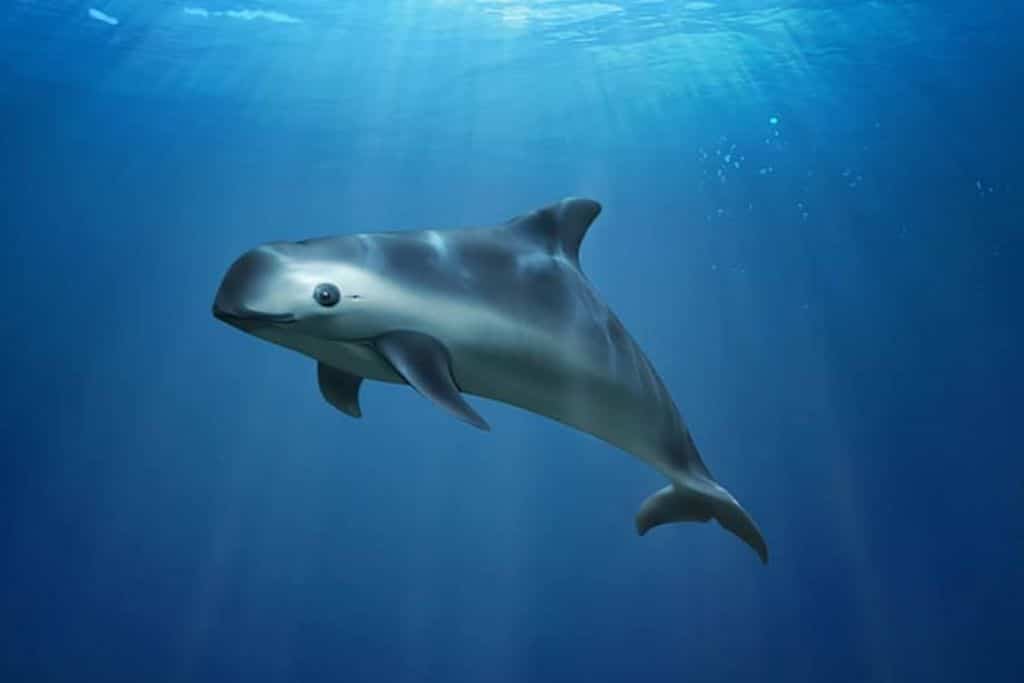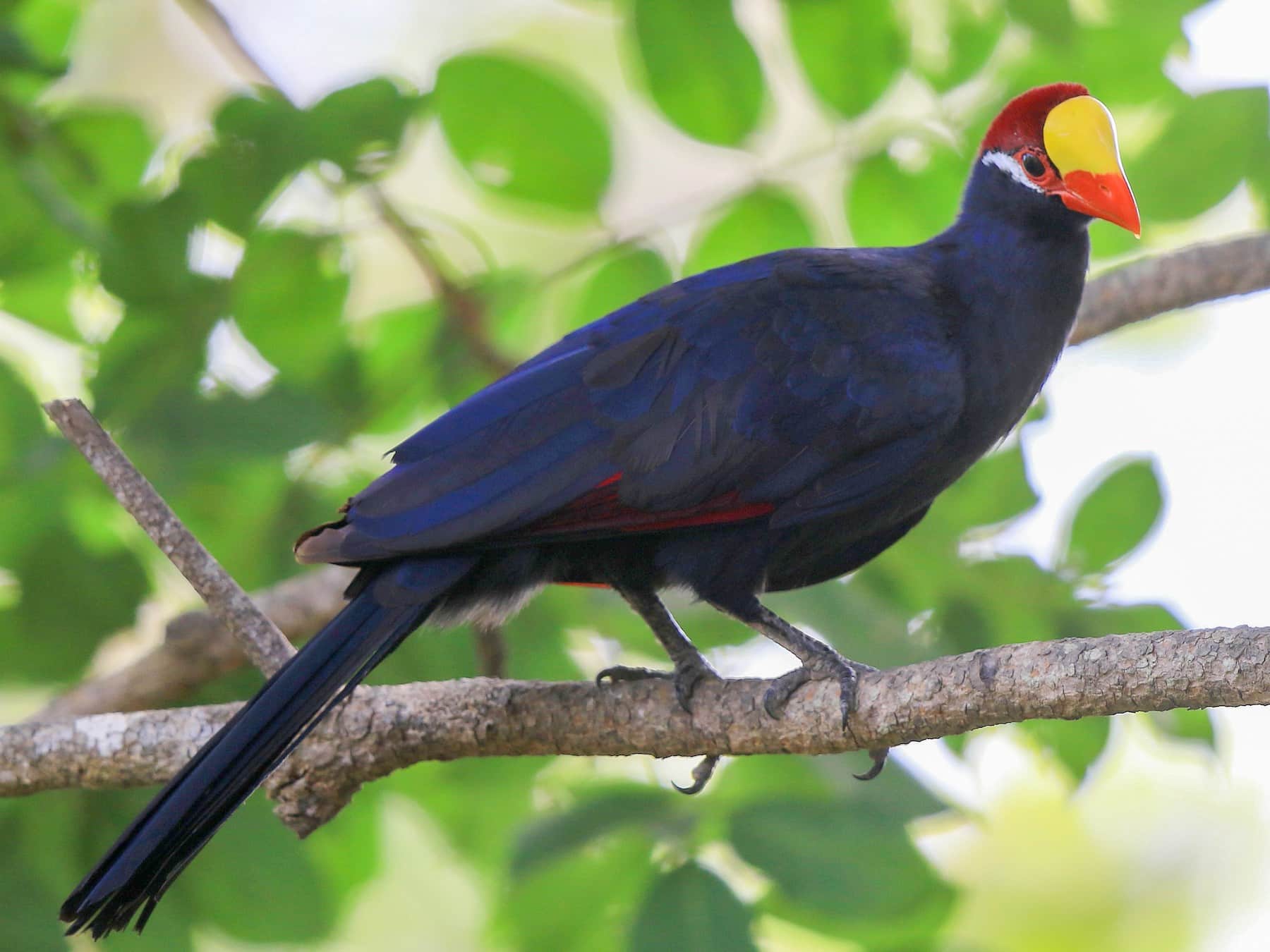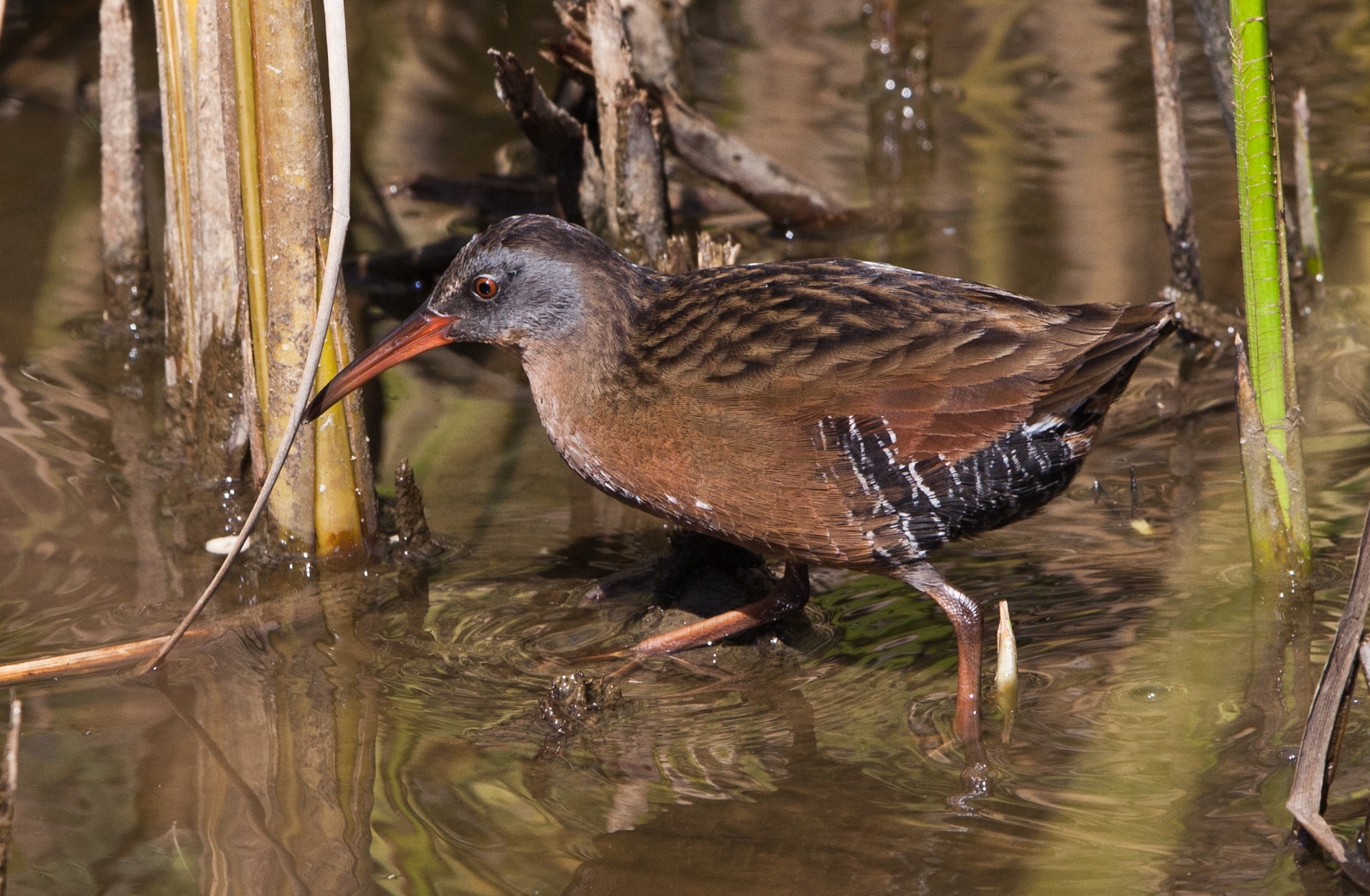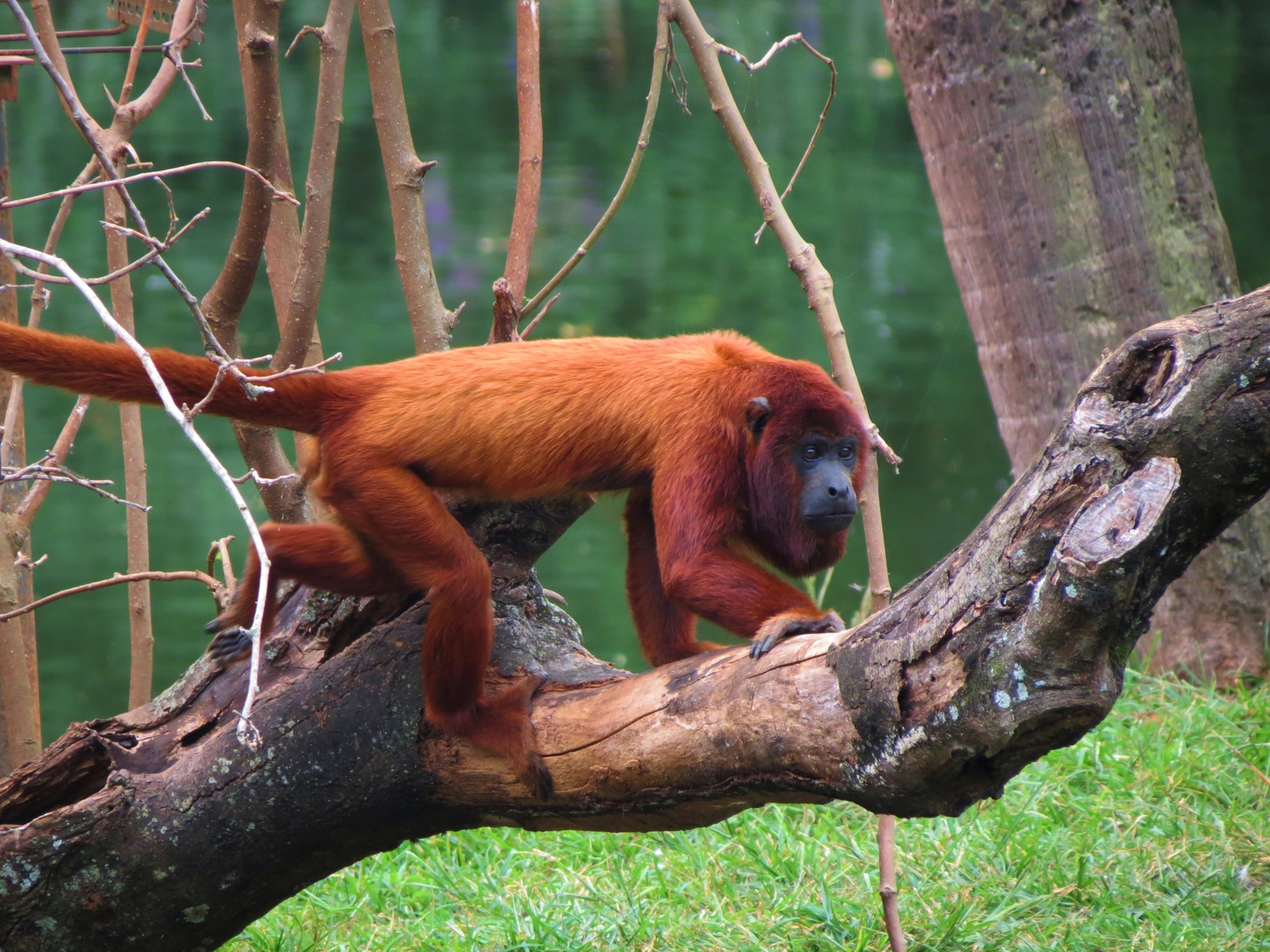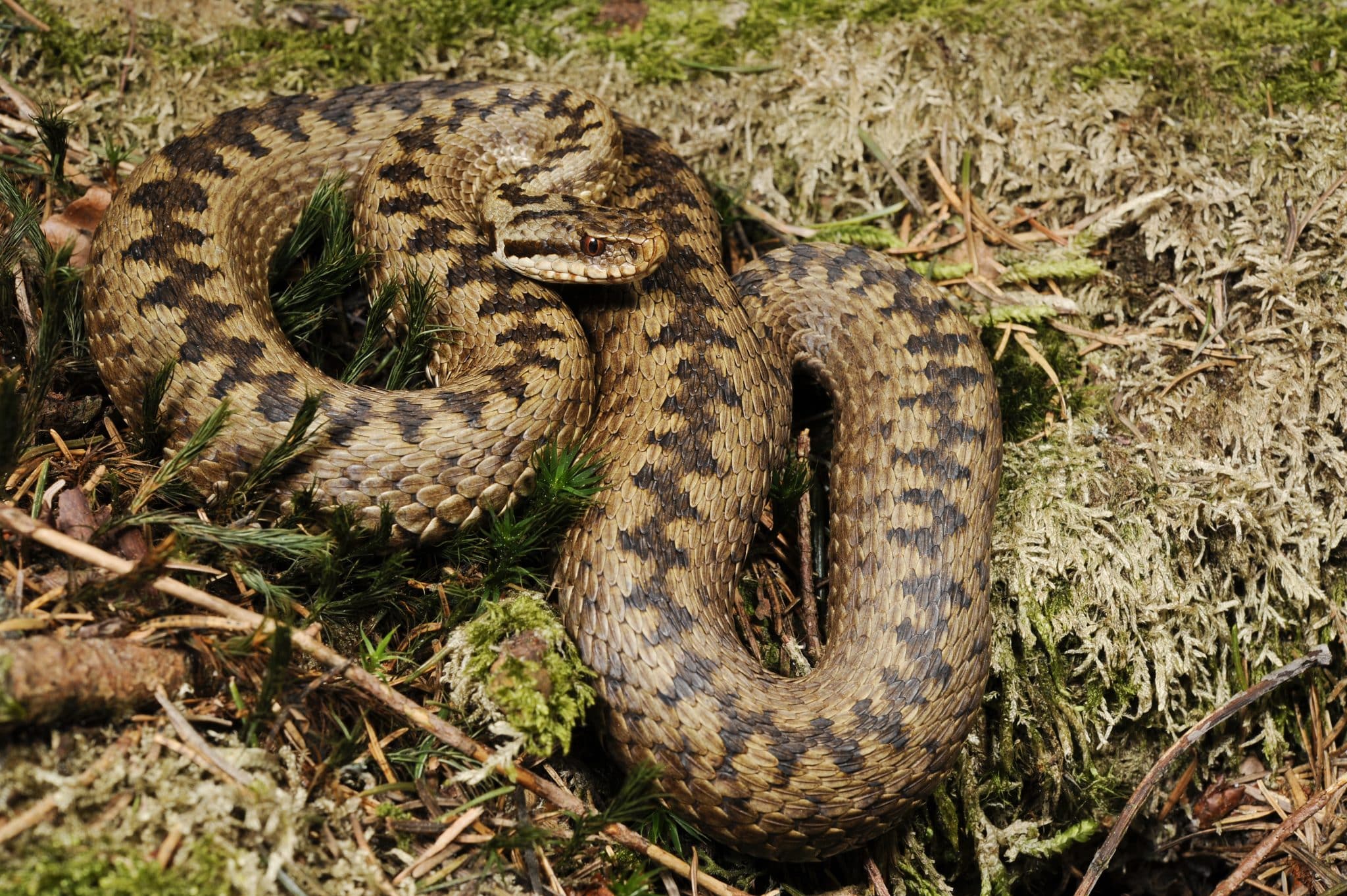Don’t you think the animals beginning with V play a crucial role in maintaining the balance of our ecosystems? Yes, definitely!
As the environment consists of various animals, from microscopic organisms to huge mammals, these animals contribute significantly to the well-being of our environment.
From Vampire Bat to Vietnamese Mossy Frogs, these animals play a crucial role in maintaining biodiversity.
Beyond their mesmerizing beauty and value, these animals serve an essential ecological role that sustains life on Earth.
Understanding how the animal kingdom safeguards our natural world is imperative for fostering a deeper appreciation of the interconnected web of life.
Let’s get started to see specifically the animals, starting with V.
List of Animals Starting with V
1. Vampire Bat
Place of Origin: Central and South America
Regions of Habitat: Found in Mexico, Brazil, Chile, and Argentina
Scientific Name: Desmodus rotundus
Vampire bats are small, nocturnal bats known for their unique feeding habit of drinking blood from other animals.
They have heat sensors on their noses to find blood vessels close to the skin.
Their saliva contains an anticoagulant that prevents blood from clotting while they feed.
Typically, they target livestock but occasionally feed on wild animals and birds.
Interesting Fact: Contrary to popular belief, vampire bats are not aggressive towards humans and are known to engage in social behaviors such as grooming and food sharing within their colonies.
2. Vervet Monkey
Place of Origin: Africa
Regions of Habitat: Widely distributed across East and Southern Africa
Scientific Name: Chlorocebus pygerythrus
Vervet monkeys are medium-sized primates with grey body fur, black faces, and white-fringed hair.
They are highly social and live in well-organized troops led by a dominant male.
Their diet primarily consists of fruits, seeds, and occasionally small vertebrates.
Interesting Fact: Vervet monkeys are known for their remarkable ability to adapt to different environments, including areas impacted by human activities.
Their distinct alarm calls for different predators indicate their advanced communication skills.
3. Vicuña
Place of Origin: South America
Regions of Habitat: Andean mountain regions of Peru, Chile, Bolivia, and Argentina
Scientific Name: Vicugna vicugna
Vicuñas are wild relatives of llamas and alpacas, known for their fine wool.
They are slender, elegant animals with long necks, large eyes, and soft, dense fur.
Vicuñas live in family-based groups and graze on high-altitude grasses and other vegetation.
Interesting Fact: Vicuña wool is extremely valuable due to its softness and warmth.
In Incan times, only royalty was permitted to wear garments made from vicuña wool.
4. Virginia Opossum
Place of Origin: North America
Regions of Habitat: Widely distributed across the United States
Scientific Name: Didelphis virginiana
The Virginia opossum is a marsupial, notable for being North America’s only native marsupial.
It has a distinctive white face with dark eyes, a greyish body, and a long, hairless tail.
Opossums are nocturnal and omnivorous, feeding on various foods, including fruits, insects, and small animals.
Interesting Fact: When threatened, Virginia opossums can ‘play dead,’ a defensive mechanism where they become limp, close their eyes, and exude a smell of decay to deter predators.
5. Vulture
Place of Origin: Various, depending on the species
Regions of Habitat: Found worldwide, especially in Africa, Asia, and Europe
Scientific Name: Varies by species
Vultures are large birds of prey, easily identified by their bald heads and powerful beaks.
They are scavengers, primarily feeding on carrion.
Vultures play a crucial role in their ecosystem by cleaning up dead animal remains, thus preventing the spread of diseases.
Interesting Fact: Vultures have an incredibly strong stomach acid, allowing them to safely consume rotting carcasses that would be lethal to other animals due to bacteria or toxins.
6. Velvet Ant
Place of Origin: Worldwide, particularly in warmer regions
Regions of Habitat: Found in desert and grassland areas
Scientific Name: Mutillidae (family)
Despite their name, velvet ants are wasps. Females are wingless and covered in dense, velvet-like hair, often brightly colored.
They are solitary insects, and females lay their eggs in the nests of other ground-nesting bees and wasps.
Interesting Fact: Female velvet ants are known for their extremely painful sting, earning them the nickname “cow killer,” although their sting is not typically dangerous to humans.
7. Vine Snake
Place of Origin: Asia and the Americas, depending on the species
Regions of Habitat: Tropical rainforests, woodlands, and grasslands
Scientific Name: Ahaetulla (genus)
Vine snakes are slender, arboreal snakes that closely resemble vines or branches, aiding in their camouflage.
They have long, narrow heads and are usually green or brown. These snakes are mildly venomous and prey primarily on small birds and lizards.
Interesting Fact: The vine snake’s ability to change color slightly, depending on its surroundings, makes it an adept ambush predator, blending seamlessly into the foliage.
8. Viper
Place of Origin: Worldwide, except for Australia, Madagascar, and various islands
Regions of Habitat: Varies widely from forests to deserts
Scientific Name: Viperidae (family)
Vipers are a family of venomous snakes known for their long, hinged fangs that allow them to inject venom deeply into their prey.
They come in various sizes and colors, but most have a distinctive triangular head and keeled scales.
Vipers are mainly nocturnal and feed on small animals.
Interesting Fact: The viper’s venom is primarily used for prey immobilization and digestion, as it contains enzymes that help break down the body tissues of their victims.
9. Violet-Backed Starling
Place of Origin: Sub-Saharan Africa
Regions of Habitat: Open woodlands and savannas
Scientific Name: Cinnyricinclus leucogaster
The violet-backed starling is a small bird with a striking appearance.
Males have iridescent violet backs and wings contrasting with their white underparts. Females, on the other hand, are brown with faint streaks.
They feed on fruits and insects and are known for their melodious song.
Interesting Fact: During mating season, the male violet-backed starling’s vibrant colors become even more pronounced, helping attract mates and deter rivals.
10. Vaquita
Place of Origin: Gulf of California, Mexico
Regions of Habitat: Shallow, murky lagoons in the Gulf of California
Scientific Name: Phocoena sinus
The vaquita is a small porpoise and the world’s rarest marine mammal.
Its small size, robust body, and distinctive dark rings around its eyes and mouth characterize it.
Vaquitas are shy and elusive, making them difficult to study in the wild.
Interesting Fact: The vaquita is critically endangered, with population estimates suggesting fewer than 30 individuals remaining, primarily due to accidental entanglement in illegal gillnets.
11. Variable Squirrel
Place of Origin: Southeast Asia
Regions of Habitat: Forests in countries like Indonesia and Malaysia
Scientific Name: Callosciurus finlaysonii
The variable squirrel is a tree squirrel known for its varied fur color, which ranges from grey to almost black, with some having cream-colored patches.
They have bushy tails and are medium-sized.
These squirrels are diurnal and feed mainly on fruits, nuts, and sometimes insects.
Interesting Fact: The variable squirrel’s ability to adapt its fur color to different environments is a remarkable example of camouflage, helping it evade predators in various forest habitats.
12. Vampire Squid
Place of Origin: Tropical and temperate oceans worldwide
Regions of Habitat: Deep ocean waters, often below 600 meters
Scientific Name: Vampyroteuthis infernalis
The vampire squid is a unique cephalopod with a dark, webbed body resembling a cloak.
Its eight arms are connected by a web of skin, making it look like a vampire’s cape. It has large, sensitive eyes and is bioluminescent.
Despite its name, it feeds mainly on marine detritus, not blood.
Interesting Fact: The vampire squid has a unique defense mechanism: it can invert its cape, covering itself with bioluminescent spines, which startle predators and may deter them from attacking.
13. Verreaux’s Sifaka
Place of Origin: Madagascar
Regions of Habitat: Dry deciduous forests in Madagascar
Scientific Name: Propithecus verreauxi
Verreaux’s Sifaka is a medium-sized lemur known for its long, thick, white fur with black face and limbs.
These lemurs are arboreal and are noted for their unique mode of locomotion, moving by leaping sideways through trees.
They are herbivores, primarily eating leaves, fruits, and flowers.
Interesting Fact: When on the ground, Verreaux’s Sifakas move by hopping on their hind legs, a behavior rarely seen in other primates, making them quite a spectacle to observe.
14. Violet Turaco
Place of Origin: West Africa
Regions of Habitat: Forests and savannas in countries like Senegal and Sudan
Scientific Name: Musophaga violacea
The violet turaco is a brightly colored bird with a vivid violet body, yellow bill, and striking red eye rings.
It is a large, fruit-eating bird often seen in small flocks.
When in flight, the wings are surprisingly red, contrasting with the violet body.
Interesting Fact: Despite its bright colors, the violet turaco is surprisingly difficult to spot in its natural habitat due to its shy nature and preference for dense forest canopies.
15. Visayan Warty Pig
Place of Origin: The Philippines
Regions of Habitat: Rainforests of the Visayan Islands
Scientific Name: Sus cebifrons
The Visayan warty pig is a small, critically endangered species of pig with distinctive tufts of hair and ‘warts’ or fleshy growths on its face.
Originally found across several islands in the Philippines, its numbers have significantly reduced.
They are omnivorous, with a diet including roots, fruits, and small animals.
Interesting Fact: Conservation efforts for the Visayan warty pig include breeding programs in various zoos worldwide to help increase their population and ensure the species’ survival.
16. Vulturine Guineafowl
Place of Origin: Africa
Regions of Habitat: Dry savannas of Northeast Africa
Scientific Name: Acryllium vulturinum
The vulturine guineafowl is the largest and most spectacular species, with striking blue and black plumage and a long, flowing tail.
They have a bare, vulture-like head and neck, where they get their name.
These birds are ground-dwelling and feed on various seeds and small invertebrates.
Interesting Fact: Despite their heavy build and preference for walking, vulturine guineafowls can fly short distances, especially to escape predators or to roost in trees.
17. Venezuelan Troupial
Place of Origin: Northern South America
Regions of Habitat: Open and semi-open areas in Venezuela, Colombia, and the Caribbean islands
Scientific Name: Icterus icterus
The Venezuelan troupial is a brightly colored bird renowned for its striking orange body, black head, and white streaks on the wings and tail.
It is the national bird of Venezuela.
These birds are known for their melodic songs and are often found in gardens and parks.
Interesting Fact: Unlike many other birds, the Venezuelan troupial often takes over the nests of other birds rather than building their own.
18. Volcano Rabbit
Place of Origin: Mexico
Regions of Habitat: Pine forests near volcanoes in Mexico
Scientific Name: Romerolagus diazi
The volcano rabbit is one of the smallest species known for its compact, rounded body and short, dense fur.
It is named for its habitat in the regions around Mexican volcanoes. These rabbits are nocturnal and feed on grasses and other vegetation.
Interesting Fact: The volcano rabbit communicates using a series of high-pitched sounds, unique among rabbits. It is also considered one of the world’s most endangered rabbit species.
19. Violet-Eared Waxbill
Place of Origin: Southern Africa
Regions of Habitat: Grasslands and savannas of Namibia, Botswana, and South Africa
Scientific Name: Uraeginthus granatina
The violet-eared waxbill is a small, colorful bird known for its bright violet patches on the ears and under the tail.
Its body is brown and grey with a distinctive red bill.
They are social birds, often seen in pairs or small groups, feeding mainly on grass seeds.
Interesting Fact: During the breeding season, the male violet-eared waxbill performs a unique courtship display that includes song, fluttering flights, and presenting grass stalks or flower petals to the female.
20. Virginia Rail
Place of Origin: North America
Regions of Habitat: Wetlands across North America, particularly in marshes
Scientific Name: Rallus limicola
The Virginia rail is a small, water-loving bird known for its elusive nature. It has a long, slender bill, a reddish-brown body, and a distinctive black-and-white barred pattern on its flanks.
These birds are often heard rather than seen, hiding in dense vegetation.
Interesting Fact: Despite their small wings, Virginia rails can make long-distance migrations and make nocturnal flights between their breeding and wintering grounds.
21. Velvet Worm
Place of Origin: Found in tropical and subtropical regions worldwide, from rainforests to mountainous areas.
Regions of Habitat: Velvet worms thrive in leaf litter, soil, and moss-covered environments, often hidden in humid microhabitats.
Scientific Name: Onychophora
Velvet worms are soft-bodied, caterpillar-like creatures covered in a velvety layer of fine, hair-like structures.
They exhibit a peculiar hunting mechanism, shooting a sticky slime to immobilize their prey.
Interesting Fact: Despite their appearance, velvet worms are ancient creatures with a lineage dating back over 500 million years. They are often considered “living fossils” due to their evolutionary stability over an incredibly long period.
22. Violet Carpenter Bee
Place of Origin: Europe, Asia, and Northern Africa
Regions of Habitat: Woodlands, orchards, and gardens
Scientific Name: Xylocopa violacea
The violet carpenter bee is one of the largest bees found in Europe.
It has a black body with a metallic violet sheen and is known for its ability to drill into wood to make its nest.
They are solitary bees and are important pollinators for many wildflowers and crops.
Interesting Fact: Despite their intimidating size and loud buzzing sound, violet carpenter bees are generally not aggressive and are less likely to sting than other bee species.
23. Valais Blacknose Sheep
Place of Origin: Switzerland
Regions of Habitat: Mountainous regions of Switzerland
Scientific Name: Ovis Aries
The Valais Blacknose Sheep is a domestic breed known for its distinctive appearance: a fluffy white coat with black patches on the face and ears.
They are primarily raised for wool and are well adapted to the harsh mountainous environment.
Interesting Fact: This breed has recently gained popularity due to its unique, cuddly appearance, and it’s often referred to as one of the cutest sheep breeds in the world.
24. Variable Hawk
Place of Origin: South America
Regions of Habitat: Wide range, from coastal regions to high Andes
Scientific Name: Geranoaetus polyosoma
The variable hawk is a large raptor with a broad range of color morphs, from nearly all black to gray and rufous.
It is well adapted to various habitats and preys on small mammals, birds, and reptiles. It’s known for its powerful build and keen eyesight.
Interesting Fact: The name ‘variable’ refers to the significant variation in plumage among individuals, which makes this species particularly interesting to ornithologists and birdwatchers.
25. Velvet Scoter
Place of Origin: Northern Europe and Asia
Regions of Habitat: Breeds in freshwater lakes and rivers; winters in coastal waters
Scientific Name: Melanitta fusca
The velvet scoter is a large sea duck, predominantly black, with a white wing patch and a distinct bulbous orange bill.
It dives for mollusks and crustaceans and is known for its powerful, rapid flight.
Interesting Fact: Despite its bulky appearance, the velvet scoter is an agile and swift flier, capable of reaching impressive speeds, especially during long migratory flights.
26. Vasa Parrot
Place of Origin: Madagascar and nearby islands
Regions of Habitat: Forests and woodlands
Scientific Name: Coracopsis vasa
Vasa parrots are unusual-looking birds with a predominantly dark grey to black coloration and a distinctive long neck and beak.
They are one of the few parrot species where the female is larger than the male. These birds are known for their intelligence and curious nature.
Interesting Fact: During the breeding season, the female Vasa parrot’s feather color can change, and she can lose her feathers entirely on her head, giving her a distinctive bald appearance.
27. Violet Sabrewing
Place of Origin: Central America
Regions of Habitat: Humid forests and coffee plantations from Mexico to Panama
Scientific Name: Campylopterus hemileucurus
The violet sabrewing is a large, striking hummingbird known for its vibrant violet plumage and long, curved bill.
Males are particularly colorful with deep violet and blue hues. They are strong fliers and feed primarily on nectar from flowers.
Interesting Fact: Despite their small size, violet saber wings are quite territorial and can be seen aggressively defending their feeding areas against other hummingbirds.
28. Vicarious Spider
Place of Origin: Worldwide distribution
Regions of Habitat: Varies widely, from forests to deserts and urban areas
Scientific Name: Varies by species
Vicarious spiders, a term for spiders that adapt to various habitats, come in many forms.
They exhibit a vast range of behaviors and appearances, from web-building to hunting, and their adaptability is a key to their survival in diverse environments.
Interesting Fact: Some species of vicarious spiders have developed unique hunting strategies, such as mimicking the prey of other predators or using vibrations to lure their prey.
29. Vulturine Parrot
Place of Origin: New Guinea
Regions of Habitat: Lowland and hill forests of New Guinea
Scientific Name: Psittrichas fulgidus
The vulturine parrot, or Pesquet’s parrot, is a large bird with a unique vulture-like appearance.
It has dark plumage, bright red patches on its belly and wings, and a featherless face. It feeds primarily on figs.
Interesting Fact: This parrot is the only species in its genus and is notable for its featherless face, which is thought to be an adaptation to prevent feather matting from sticky fruit.
30. Vendace
Place of Origin: Northern Europe
Regions of Habitat: Freshwater lakes in Scotland, Scandinavia, and Russia
Scientific Name: Coregonus albula
The vendace is a small, silvery freshwater fish from the salmon family.
It prefers cold, deep, clear lakes and is primarily a pelagic fish, meaning it lives in the open water rather than near the bottom or the shore.
Interesting Fact: The vendace is known for its delicate flavor and is considered a delicacy in some parts of Europe. In Scotland, it’s the focus of conservation efforts due to its rarity and ecological importance.
31. Vulturine Fish Eagle
Place of Origin: Sub-Saharan Africa
Regions of Habitat: Lakes, rivers, and coastal regions in Africa
Scientific Name: Haliaeetus vocifer
The vulturine fish eagle, also known as the African fish eagle, has a distinctive appearance: a white head, a brown body, and large, powerful, black wings.
Renowned for its haunting call, it primarily feeds on fish, which it skillfully catches from the water’s surface.
Interesting Fact: This eagle is a national symbol of several African countries and appears on the coat of arms of Namibia, Zambia, and South Sudan.
32. Violet-Tailed Sylph
Place of Origin: Western South America
Regions of Habitat: Andean cloud forests in Colombia and Ecuador
Scientific Name: Aglaiocercus coelestis
The violet-tailed sylph is a striking hummingbird known for its iridescent violet tail and metallic green body.
Males have a longer tails than females. These tiny birds are agile fliers and feed primarily on nectar.
Interesting Fact: The long, flowing tail of the male violet-tailed sylph is used in courtship displays and is a key feature in attracting mates.
33. Venezuelan Red Howler Monkey
Place of Origin: Northern South America
Regions of Habitat: Tropical rainforests of Venezuela and Brazil
Scientific Name: Alouatta seniculus
The Venezuelan red howler monkey is known for its reddish-brown fur and large throat sac, which it uses to produce its distinctive howling calls that can be heard over considerable distances.
They are arboreal and herbivorous, living in groups.
Interesting Fact: Their howling is not just communication but also a means of establishing territorial boundaries and avoiding physical confrontations with other troops.
34. Valley Quail
Place of Origin: North America
Regions of Habitat: Chaparral, brush, and high desert of California and the Northwestern United States
Scientific Name: Callipepla californica
Also known as the California quail, the valley quail is a small, plump bird with a distinctive black plume that curves forward from its head.
They have a greyish-brown body with a lighter belly and a scale-like pattern.
Interesting Fact: The California quail is the state bird of California and is known for its hardiness and adaptability to various habitats.
35. Violet-Backed Hyliota
Place of Origin: Sub-Saharan Africa
Regions of Habitat: Woodlands and forests
Scientific Name: Hyliota violacea
This small passerine bird is known for its striking appearance, with males having a vivid violet back and head.
They are insectivorous and often forage in small flocks, moving through the canopy for food.
Interesting Fact: Despite their vibrant colors, violet-backed hyliotas are often hard to spot due to their preference for high canopies and their fast, fluttering flight.
36. Visayan Spotted Deer
Place of Origin: The Philippines
Regions of Habitat: Tropical rainforests of the Visayan Islands
Scientific Name: Rusa alfredi
This small deer species is characterized by its reddish-brown coat with white spots, which helps camouflage it in its forest habitat.
They are nocturnal and feed on a variety of vegetation.
Interesting Fact: The Visayan spotted deer is one of the most endangered deer species in the world, primarily due to habitat loss and hunting.
37. Von der Decken’s Hornbill
Place of Origin: East Africa
Regions of Habitat: Savannahs and dry thornbush areas
Scientific Name: Tockus Deckeni
This bird is easily recognized by its striking black and white plumage and large, curved, red, and ivorybill.
The males have red bills, while females have black bills. They are omnivorous and known for their loud calls.
Interesting Fact: Named after the German explorer Baron von der Decken, these hornbills are known for their unique breeding behavior, where the female seals herself in a tree cavity to lay eggs and is fed by the male through a small hole.
38. Vipera Berus
Place of Origin: Europe and Asia
Regions of Habitat: Forests, meadows, and rocky slopes
Scientific Name: Vipera berus
Also known as the common European adder or common European viper, this snake is distinguished by its zigzag dorsal stripe.
It is relatively small and venomous, with a diet of small mammals and birds.
Interesting Fact: The viper is the only venomous snake native to the British Isles and is known for its shyness and reluctance to bite unless provoked.
39. Violet-Green Swallow
Place of Origin: North America
Regions of Habitat: Open forests and woodlands, often near water
Scientific Name: Tachycineta thalassina
The violet-green swallow is a small, graceful bird with an iridescent green back and a violet rump.
They have white underparts and long, pointed wings. These swallows are excellent fliers and feed primarily on insects caught in mid-air.
Interesting Fact: During their aerial acrobatic displays, these swallows can often be seen flying very high in the sky, catching insects and showcasing their incredible agility.
40. Vietnamese Mossy Frog
Place of Origin: Northern Vietnam
Regions of Habitat: Rainforests and rocky limestone areas
Scientific Name: Theloderma corticale
This unique frog species is known for its moss-like appearance, with a green, bumpy skin that helps it blend into its surroundings.
They are relatively small and are excellent climbers due to their specialized toe pads.
Interesting Fact: The Vietnamese mossy frog’s camouflage is so effective that it can be almost impossible to spot when it stays motionless against a backdrop of moss and lichen-covered rocks.
Final Thoughts
In the list of animals starting with V, we have uncovered different animals, each with unique characteristics and contributions to the ecosystem.
From the vulture soaring high in the skies to the vampire, the diversity within this subset is a sign of nature’s boundless biodiversity and the ecosystem’s beauty.
Going through different animals, starting with V, reminds us to cherish and protect our planet’s remarkable biodiversity.
We always think the letter V must not have enough animal names, but we were wrong.
This blog should inspire the explorer in you to continue exploring and appreciating the remarkable creatures that share our world.











